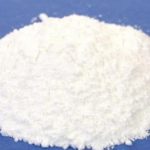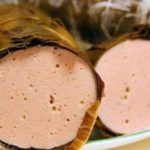Giò chả is a popular Vietnamese dish, especially during the upcoming Tet holiday. However, some unscrupulous merchants, in an attempt to increase their profits, have been adding borax to their giò and chả (a type of Vietnamese sausage) to make them chewier and more elastic, as well as to extend their shelf life. Unfortunately, they may not be aware of the potential health hazards associated with this practice. Let’s explore some ways to identify giò and chả that contain borax to ensure the safety of your family’s food.
1 How to Identify Giò Lụa (Vietnamese Pork Sausage) Containing Borax
Visual Inspection:
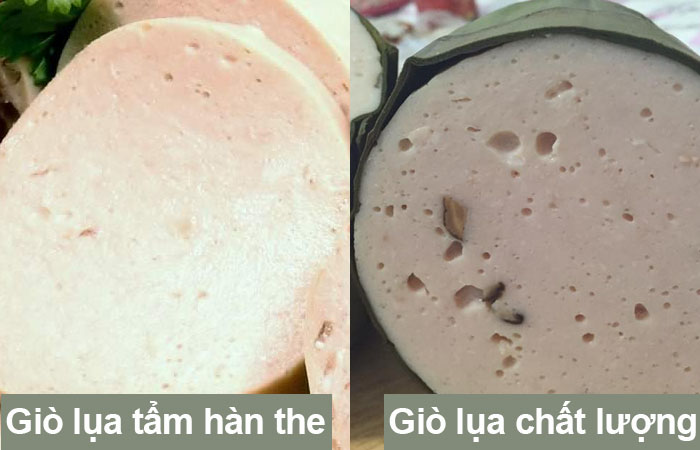
High-quality giò lụa has a creamy ivory color with a slight pink hue. It is usually made from lean pork, and when cut, the surface reveals tiny pores, and the sausage feels slightly moist to the touch. Cutting through it with a knife may give a slight resistance.
On the other hand, if the giò lụa is pure white without any pores and cuts too smoothly, it likely contains borax and is made with lower-quality meat.
Smell Test:
Fresh giò lụa has a subtle, pleasant aroma from the wrapping leaves, typically banana leaves, which is not too overpowering. If you detect a strong fragrance and cannot discern the scent of the wrapping leaves, and the sausage feels sticky, it is likely treated with borax and is of inferior quality.
Taste Test:
When you bite into a piece of authentic giò chả, you should experience a sweet and delicate flavor, with a slightly soft, chewy, and not overly crispy texture. If the giò lụa feels excessively crispy and chewy, it indicates the presence of borax used during preparation.
Reference:
2 How to Identify Chả (Vietnamese Sausage) Containing Borax
Visual Inspection:
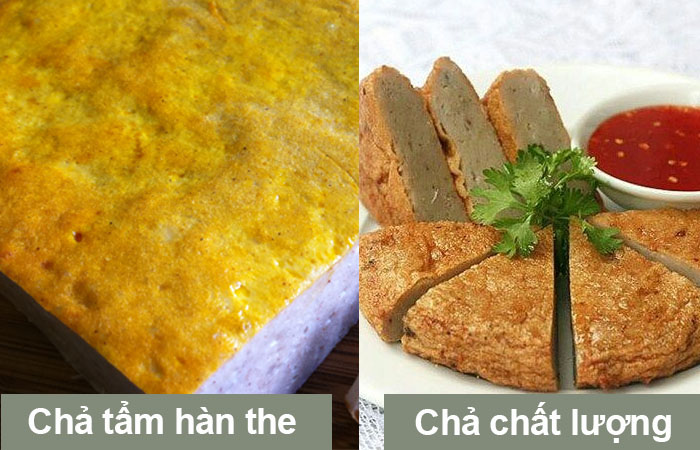
High-quality chả has a slightly coarse outer surface with a golden color resembling fried chicken. When cut, the surface reveals small holes, and touching it leaves minimal grease on your fingers. On the other hand, if the exterior is smooth, the cut surface is without holes, and it feels sticky, it is likely treated with borax and chemical additives.
Smell Test:
Delicious chả emits a gentle, meaty fragrance. If the aroma is too strong, it may indicate the presence of borax.
Taste Test:
Good-quality chả should be firm yet not dry or overly hard. It should not crumble easily and should retain its rich, fatty flavor. If the chả is too crumbly, lacks the fatty taste, and is excessively chewy and crispy, it is likely treated with borax and chemical additives.
Litmus Paper Test:
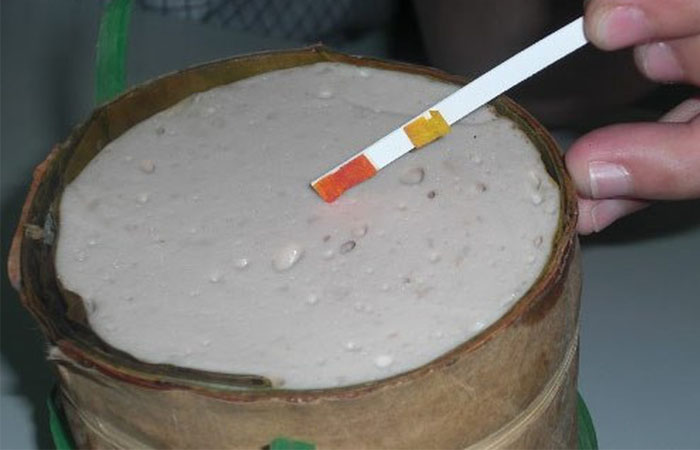
Using litmus paper, touch the surface of the giò chả. If the paper turns red or reddish-orange, it indicates the presence of borax.
Turmeric Paper Test:
-
Grind fresh turmeric and soak it in 90-degree alcohol for 3-4 hours.
-
Soak filter paper in the turmeric solution for an hour, then remove and let it air dry. Soak it again in clean water for 2 hours.
-
Finally, let it air dry, cut into small pieces, and store in an airtight container for future use.
To test for borax in giò chả, place the turmeric paper on the surface of the sausage for about a minute. If the paper turns red, it confirms the presence of borax.
Reference:
Identifying borax-treated giò chả is not too difficult. By following these simple tips, you can ensure the safety and health of your family’s food choices.
Order Safe and Delicious Giò Chả from Us:




























